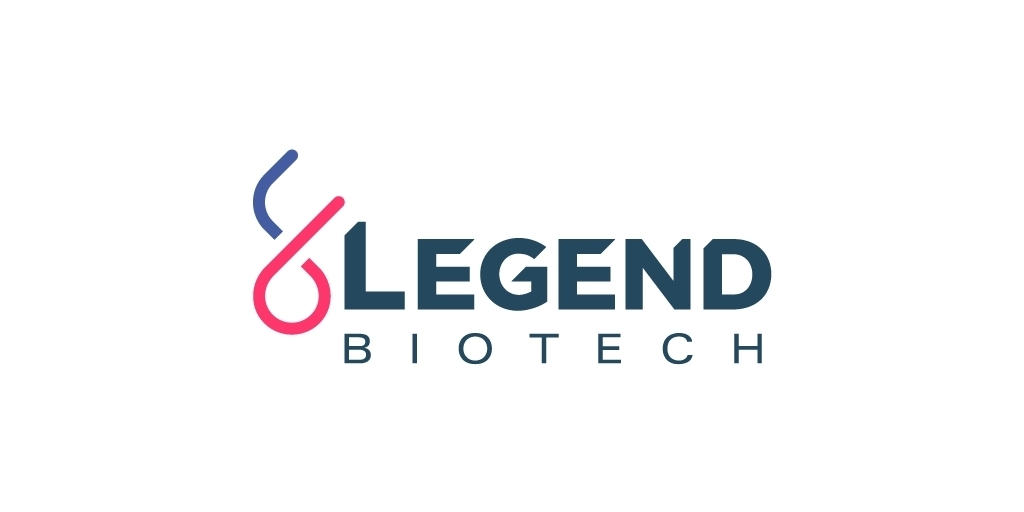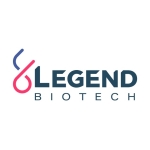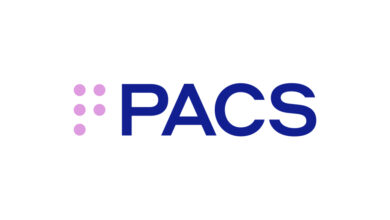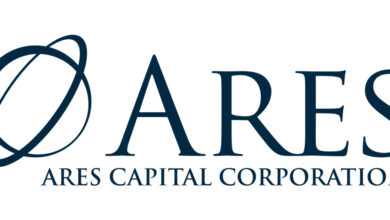Legend Biotech’s CARVYKTI® (ciltacabtagene autoleucel) Becomes the First and Only BCMA-Targeted CAR-T Cell Therapy Approved by the FDA for Second-Line Treatment of Multiple Myeloma

New indication for this one-time infusion may provide patients with a treatment-free respite as early as first relapse
SOMERSET, N.J.–(BUSINESS WIRE)–Legend Biotech Corporation (NASDAQ: LEGN) (Legend Biotech), a global leader in cell therapy, announced today the U.S. Food and Drug Administration (FDA) has approved CARVYKTI® (ciltacabtagene autoleucel; cilta-cel) for the treatment of patients with relapsed or refractory multiple myeloma who have received at least one prior line of therapy, including a proteasome inhibitor (PI), and an immunomodulatory agent (IMiD), and are refractory to lenalidomide.1 CARVYKTI® is the first and only B-cell Maturation Antigen (BCMA) targeted therapy, including CAR-T therapies, bispecific antibodies, and antibody-drug conjugates (ADCs), approved starting in the second-line of treatment for patients with multiple myeloma.
“The expanded label of CARVYKTI has the potential to transform the treatment paradigm for multiple myeloma by providing patients and physicians with a personalized immunotherapy that can be used earlier in the treatment regimen. Multiple myeloma is an incurable and progressive hematologic cancer that causes patients to relapse and become refractory to treatment, so new, innovative options are desperately needed,” said Ying Huang, Ph.D., Chief Executive Officer of Legend Biotech. “We are committed to improving the lives of patients battling blood cancer and will continue to work towards developing cellular therapies that bring us closer to a cure.”
The FDA approval is based on positive results from the CARTITUDE-4 study, which demonstrated that CARVYKTI® resulted in statistically significant and clinically meaningful improvement of progression-free survival compared to two standard of care treatment regimens, pomalidomide, bortezomib, and dexamethasone (PVd) or daratumumab, pomalidomide, and dexamethasone (DPd), in adults with relapsed and lenalidomide-refractory multiple myeloma who received one to three prior lines of therapy.1 This approval follows a unanimous (11 to 0) recommendation from the FDA Oncologic Drugs Advisory Committee (ODAC) in support of CARVYKTI® in earlier lines of treatment.
“The results of the CARTITUDE-4 study demonstrated the substantial clinical benefit of cilta-cel infusion over standard of care continuous therapy in patients who experience a relapse after one to three prior treatments,” said Surbhi Sidana, M.D., Assistant Professor of Medicine, Blood and Marrow Transplantation & Cellular Therapy at Stanford University School of Medicine.† “This expanded FDA approval for cilta-cel will allow a wider patient population to access this novel therapy earlier in the course of their treatment.”
“This expanded FDA approval validates the growing need for CARVYKTI and means more patients will have access to our life-altering, individualized therapy,” said Birk Vanderweeën, Senior Vice President, Global Manufacturing and Supply. “To ensure we can meet increased demand for our customized therapy, our global manufacturing teams and partners have expanded production capacity and are laser-focused on further scaling out operations to ensure patients who need CARVYKTI have access to it.”
The safety profile for CARVYKTI® includes a boxed warning for Cytokine Release Syndrome (CRS), Immune Effector Cell-Associated Neurotoxicity Syndrome (ICANS), Parkinsonism and Guillain-Barre syndrome, and their associated complications, Hemophagocytic Lymphohistiocytosis/Macrophage Activation Syndrome (HLH/MAS), Prolonged and Recurrent Cytopenias and Secondary Malignancies including myelodysplastic syndrome, acute myeloid leukemia, and T-cell malignancies.1 Warnings and Precautions include Increased Early Mortality, Infections, Hypogammaglobulinemia, Hypersensitivity Reactions, and Effects on Ability to Drive and Use Machines.1
The most common nonlaboratory adverse reactions (incidence greater than 20%) are pyrexia, cytokine release syndrome, hypogammaglobulinemia, hypotension, musculoskeletal pain, fatigue, infections-pathogen unspecified, cough, chills, diarrhea, nausea, encephalopathy, decreased appetite, upper respiratory tract infection, headache, tachycardia, dizziness, dyspnea, edema, viral infections, coagulopathy, constipation, and vomiting.1 The most common Grade 3 or 4 laboratory adverse reactions (incidence greater than or equal to 50%) include lymphopenia, neutropenia, white blood cell decreased, thrombocytopenia, and anemia.1
CARVYKTI® IMPORTANT SAFETY INFORMATION
| WARNING: CYTOKINE RELEASE SYNDROME, NEUROLOGIC TOXICITIES, HLH/MAS, PROLONGED and RECURRENT CYTOPENIA, and SECONDARY HEMATOLOGICAL MALIGNANCIES Cytokine Release Syndrome (CRS), including fatal or life-threatening reactions, occurred in patients following treatment with CARVYKTI®. Do not administer CARVYKTI® to patients with active infection or inflammatory disorders. Treat severe or life-threatening CRS with tocilizumab or tocilizumab and corticosteroids.
Immune Effector Cell-Associated Neurotoxicity Syndrome (ICANS), which may be fatal or life-threatening, occurred following treatment with CARVYKTI®, including before CRS onset, concurrently with CRS, after CRS resolution, or in the absence of CRS. Monitor for neurologic events after treatment with CARVYKTI®. Provide supportive care and/or corticosteroids as needed.
Parkinsonism and Guillain-Barré syndrome (GBS) and their associated complications resulting in fatal or life-threatening reactions have occurred following treatment with CARVYKTI®.
Hemophagocytic Lymphohistiocytosis/Macrophage Activation Syndrome (HLH/MAS), including fatal and life-threatening reactions, occurred in patients following treatment with CARVYKTI®. HLH/MAS can occur with CRS or neurologic toxicities
Prolonged and/or recurrent cytopenias with bleeding and infection and requirement for stem cell transplantation for hematopoietic recovery occurred following treatment with CARVYKTI®.
Secondary hematological malignancies, including myelodysplastic syndrome and acute myeloid leukemia, have occurred in patients following treatment with CARVYKTI®. T-cell malignancies have occurred following treatment of hematologic malignancies with BCMA- and CD19-directed genetically modified autologous T-cell immunotherapies, including CARVYKTI®.
CARVYKTI® is available only through a restricted program under a Risk Evaluation and Mitigation Strategy (REMS) called the CARVYKTI® REMS Program. |
WARNINGS AND PRECAUTIONS
INCREASED EARLY MORTALITY – In CARTITUDE-4, a (1:1) randomized controlled trial, there was a numerically higher percentage of early deaths in patients randomized to the CARVYKTI® treatment arm compared to the control arm. Among patients with deaths occurring within the first 10 months from randomization, a greater proportion (29/208; 14%) occurred in the CARVYKTI® arm compared to (25/211; 12%) in the control arm. Of the 29 deaths that occurred in the CARVYKTI® arm within the first 10 months of randomization, 10 deaths occurred prior to CARVYKTI® infusion, and 19 deaths occurred after CARVYKTI® infusion. Of the 10 deaths that occurred prior to CARVYKTI® infusion, all occurred due to disease progression, and none occurred due to adverse events. Of the 19 deaths that occurred after CARVYKTI® infusion, 3 occurred due to disease progression, and 16 occurred due to adverse events. The most common adverse events were due to infection (n=12).
CYTOKINE RELEASE SYNDROME (CRS), including fatal or life-threatening reactions, occurred following treatment with CARVYKTI®. Among patients receiving CARVYKTI® for RRMM in the CARTITUDE-1 & 4 studies (N=285), CRS occurred in 84% (238/285), including ≥ Grade 3 CRS (ASCT 2019) in 4% (11/285) of patients. Median time to onset of CRS, any grade, was 7 days (range: 1 to 23 days). CRS resolved in 82% with a median duration of 4 days (range: 1 to 97 days). The most common manifestations of CRS in all patients combined (≥ 10%) included fever (84%), hypotension (29%) and aspartate aminotransferase increased (11%). Serious events that may be associated with CRS include pyrexia, hemophagocytic lymphohistiocytosis, respiratory failure, disseminated intravascular coagulation, capillary leak syndrome, and supraventricular and ventricular tachycardia. CRS occurred in 78% of patients in CARTITUDE-4 (3% Grade 3 to 4) and in 95% of patients in CARTITUDE-1 (4% Grade 3 to 4).
Identify CRS based on clinical presentation. Evaluate for and treat other causes of fever, hypoxia, and hypotension. CRS has been reported to be associated with findings of HLH/MAS, and the physiology of the syndromes may overlap. HLH/MAS is a potentially life-threatening condition. In patients with progressive symptoms of CRS or refractory CRS despite treatment, evaluate for evidence of HLH/MAS. Please see Section 5.4; Hemophagocytic Lymphohistiocytosis (HLH)/Macrophage Activation Syndrome (MAS).
Ensure that a minimum of two doses of tocilizumab are available prior to infusion of CARVYKTI®.
Of the 285 patients who received CARVYKTI® in clinical trials, 53% (150/285) patients received tocilizumab; 35% (100/285) received a single dose, while 18% (50/285) received more than 1 dose of tocilizumab. Overall, 14% (39/285) of patients received at least one dose of corticosteroids for treatment of CRS.
Monitor patients at least daily for 10 days following CARVYKTI® infusion at a REMS-certified healthcare facility for signs and symptoms of CRS. Monitor patients for signs or symptoms of CRS for at least 4 weeks after infusion. At the first sign of CRS, immediately institute treatment with supportive care, tocilizumab, or tocilizumab and corticosteroids.
Counsel patients to seek immediate medical attention should signs or symptoms of CRS occur at any time.
NEUROLOGIC TOXICITIES, which may be severe, life-threatening, or fatal, occurred following treatment with CARVYKTI®. Neurologic toxicities included ICANS, neurologic toxicity with signs and symptoms of parkinsonism, GBS, immune mediated myelitis, peripheral neuropathies, and cranial nerve palsies. Counsel patients on the signs and symptoms of these neurologic toxicities, and on the delayed nature of onset of some of these toxicities. Instruct patients to seek immediate medical attention for further assessment and management if signs or symptoms of any of these neurologic toxicities occur at any time.
Among patients receiving CARVYKTI® in the CARTITUDE-1 & 4 studies for RRMM, one or more neurologic toxicities occurred in 24% (69/285), including ≥ Grade 3 cases in 7% (19/285) of patients. Median time to onset was 10 days (range: 1 to 101) with 63/69 (91%) of cases developing by 30 days. Neurologic toxicities resolved in 72% (50/69) of patients with a median duration to resolution of 23 days (range: 1 to 544). Of patients developing neurotoxicity, 96% (66/69) also developed CRS. Subtypes of neurologic toxicities included ICANS in 13%, peripheral neuropathy in 7%, cranial nerve palsy in 7%, parkinsonism in 3%, and immune mediated myelitis in 0.4% of the patients.
Immune Effector Cell-Associated Neurotoxicity Syndrome (ICANS): Patients receiving CARVYKTI® may experience fatal or life-threatening ICANS following treatment with CARVYKTI®, including before CRS onset, concurrently with CRS, after CRS resolution, or in the absence of CRS.
Among patients receiving CARVYKTI® in the CARTITUDE-1 & 4 studies, ICANS occurred in 13% (36/285), including Grade ≥3 in 2% (6/285) of the patients. Median time to onset of ICANS was 8 days (range: 1 to 28 days). ICANS resolved in 30 of 36 (83%) of patients with a median time to resolution of 3 days (range: 1 to 143 days). Median duration of ICANS was 6 days (range: 1 to 1229 days) in all patients including those with ongoing neurologic events at the time of death or data cut-off. Of patients with ICANS, 97% (35/36) had CRS. The onset of ICANS occurred during CRS in 69% of patients, before and after the onset of CRS in 14% of patients respectively.
Immune Effector Cell-associated Neurotoxicity Syndrome (ICANS) occurred in 7% of patients in CARTITUDE-4 (0.5% Grade 3) and in 23% of patients in CARTITUDE-1 (3% Grade 3). The most frequent ≥2% manifestations of ICANS included encephalopathy (12%), aphasia (4%), headache (3%), motor dysfunction (3%), ataxia (2%), and sleep disorder (2%) [see Adverse Reactions (6.1)].
Monitor patients at least daily for 10 days following CARVYKTI® infusion at the REMS-certified healthcare facility for signs and symptoms of ICANS. Rule out other causes of ICANS symptoms. Monitor patients for signs or symptoms of ICANS for at least 4 weeks after infusion and treat promptly. Neurologic toxicity should be managed with supportive care and/or corticosteroids as needed [see Dosage and Administration (2.3)].
Parkinsonism: Neurologic toxicity with parkinsonism has been reported in clinical trials of CARVYKTI®. Among patients receiving CARVYKTI® in the CARTITUDE-1 & 4 studies, parkinsonism occurred in 3% (8/285), including Grade ≥ 3 in 2% (5/285) of the patients. Median time to onset of parkinsonism was 56 days (range: 14 to 914 days). Parkinsonism resolved in 1 of 8 (13%) of patients with a median time to resolution of 523 days. Median duration of parkinsonism was 243.5 days (range: 62 to 720 days) in all patients including those with ongoing neurologic events at the time of death or data cut-off. The onset of parkinsonism occurred after CRS for all patients and after ICANS for 6 patients.
Parkinsonism occurred in 1% of patients in CARTITUDE-4 (no Grade 3 to 4) and in 6% of patients in CARTITUDE-1 (4% Grade 3 to 4).
Manifestations of parkinsonism included movement disorders, cognitive impairment, and personality changes. Monitor patients for signs and symptoms of parkinsonism that may be delayed in onset and managed with supportive care measures. There is limited efficacy information with medications used for the treatment of Parkinson’s disease for the improvement or resolution of parkinsonism symptoms following CARVYKTI® treatment.
Guillain-Barré Syndrome: A fatal outcome following GBS occurred following treatment with CARVYKTI® despite treatment with intravenous immunoglobulins. Symptoms reported include those consistent with Miller-Fisher variant of GBS, encephalopathy, motor weakness, speech disturbances, and polyradiculoneuritis.
Monitor for GBS. Evaluate patients presenting with peripheral neuropathy for GBS. Consider treatment of GBS with supportive care measures and in conjunction with immunoglobulins and plasma exchange, depending on severity of GBS.
Immune Mediated Myelitis: Grade 3 myelitis occurred 25 days following treatment with CARVYKTI® in CARTITUDE-4 in a patient who received CARVYKTI® as subsequent therapy. Symptoms reported included hypoesthesia of the lower extremities and the lower abdomen with impaired sphincter control. Symptoms improved with the use of corticosteroids and intravenous immune globulin. Myelitis was ongoing at the time of death from other cause.
Peripheral Neuropathy occurred following treatment with CARVYKTI®. Among patients receiving CARVYKTI® in the CARTITUDE-1 & 4 studies, peripheral neuropathy occurred in 7% (21/285), including Grade ≥3 in 1% (3/285) of the patients. Median time to onset of peripheral neuropathy was 57 days (range: 1 to 914 days). Peripheral neuropathy resolved in 11 of 21 (52%) of patients with a median time to resolution of 58 days (range: 1 to 215 days). Median duration of peripheral neuropathy was 149.5 days (range: 1 to 692 days) in all patients including those with ongoing neurologic events at the time of death or data cut-off.
Peripheral neuropathies occurred in 7% of patients in CARTITUDE-4 (0.5% Grade 3 to 4) and in 7% of patients in CARTITUDE-1 (2% Grade 3 to 4). Monitor patients for signs and symptoms of peripheral neuropathies. Patients who experience peripheral neuropathy may also experience cranial nerve palsies or GBS.
Cranial Nerve Palsies occurred following treatment with CARVYKTI®. Among patients receiving CARVYKTI® in the CARTITUDE-1 & 4 studies, cranial nerve palsies occurred in 7% (19/285), including Grade ≥3 in 1% (1/285) of the patients. Median time to onset of cranial nerve palsies was 21 days (range: 17 to 101 days). Cranial nerve palsies resolved in 17 of 19 (89%) of patients with a median time to resolution of 66 days (range: 1 to 209 days). Median duration of cranial nerve palsies was 70 days (range: 1 to 262 days) in all patients including those with ongoing neurologic events at the time of death or data cut-off. Cranial nerve palsies occurred in 9% of patients in CARTITUDE-4 (1% Grade 3 to 4) and in 3% of patients in CARTITUDE-1 (1% Grade 3 to 4).
The most frequent cranial nerve affected was the 7th cranial nerve. Additionally, cranial nerves III, V, and VI have been reported to be affected.
Monitor patients for signs and symptoms of cranial nerve palsies. Consider management with systemic corticosteroids, depending on the severity and progression of signs and symptoms.
HEMOPHAGOCYTIC LYMPHOHISTIOCYTOSIS (HLH)/MACROPHAGE ACTIVATION SYNDROME (MAS): Among patients receiving CARVYKTI® in the CARTITUDE-1 & 4 studies, HLH/MAS occurred in 1% (3/285) of patients. All events of HLH/MAS had onset within 99 days of receiving CARVYKTI®, with a median onset of 10 days (range: 8 to 99 days) and all occurred in the setting of ongoing or worsening CRS. The manifestations of HLH/MAS included hyperferritinemia, hypotension, hypoxia with diffuse alveolar damage, coagulopathy and hemorrhage, cytopenia, and multi-organ dysfunction, including renal dysfunction and respiratory failure.
Patients who develop HLH/MAS have an increased risk of severe bleeding. Monitor hematologic parameters in patients with HLH/MAS and transfuse per institutional guidelines. Fatal cases of HLH/MAS occurred following treatment with CARVYKTI®.
HLH is a life-threatening condition with a high mortality rate if not recognized and treated early. Treatment of HLH/MAS should be administered per institutional standards.
CARVYKTI® REMS: Because of the risk of CRS and neurologic toxicities, CARVYKTI® is available only through a restricted program under a Risk Evaluation and Mitigation Strategy (REMS) called the CARVYKTI® REMS.
Further information is available at https://www.carvyktirems.com or 1-844-672-0067.
PROLONGED AND RECURRENT CYTOPENIAS: Patients may exhibit prolonged and recurrent cytopenias following lymphodepleting chemotherapy and CARVYKTI® infusion.
Among patients receiving CARVYKTI® in the CARTITUDE-1 & 4 studies, Grade 3 or higher cytopenias not resolved by day 30 following CARVYKTI® infusion occurred in 62% (176/285) of the patients and included thrombocytopenia 33% (94/285), neutropenia 27% (76/285), lymphopenia 24% (67/285) and anemia 2% (6/285). After Day 60 following CARVYKTI® infusion 22%, 20%, 5%, and 6% of patients had a recurrence of Grade 3 or 4 lymphopenia, neutropenia, thrombocytopenia, and anemia respectively, after initial recovery of their Grade 3 or 4 cytopenia. Seventy-seven percent (219/285) of patients had one, two, or three or more recurrences of Grade 3 or 4 cytopenias after initial recovery of Grade 3 or 4 cytopenia. Sixteen and 25 patients had Grade 3 or 4 neutropenia and thrombocytopenia, respectively, at the time of death.
Monitor blood counts prior to and after CARVYKTI® infusion. Manage cytopenias with growth factors and blood product transfusion support according to local institutional guidelines.
INFECTIONS: CARVYKTI® should not be administered to patients with active infection or inflammatory disorders. Severe, life-threatening, or fatal infections, occurred in patients after CARVYKTI® infusion.
Among patients receiving CARVYKTI® in the CARTITUDE-1 & 4 studies, infections occurred in 57% (163/285), including ≥Grade 3 in 24% (69/285) of patients. Grade 3 or 4 infections with an unspecified pathogen occurred in 12%, viral infections in 6%, bacterial infections in 5%, and fungal infections in 1% of patients. Overall, 5% (13/285) of patients had Grade 5 infections, 2.5% of which were due to COVID-19. Patients treated with CARVYKTI® had an increased rate of fatal COVID-19 infections compared to the standard therapy arm.
Monitor patients for signs and symptoms of infection before and after CARVYKTI® infusion and treat patients appropriately. Administer prophylactic, pre-emptive, and/or therapeutic antimicrobials according to the standard institutional guidelines. Febrile neutropenia was observed in 5% of patients after CARVYKTI® infusion and may be concurrent with CRS. In the event of febrile neutropenia, evaluate for infection and manage with broad-spectrum antibiotics, fluids, and other supportive care, as medically indicated. Counsel patients on the importance of prevention measures. Follow institutional guidelines for the vaccination and management of immunocompromised patients with COVID-19.
Viral Reactivation: Hepatitis B virus (HBV) reactivation, in some cases resulting in fulminant hepatitis, hepatic failure, and death, can occur in patients with hypogammaglobulinemia. Perform screening for Cytomegalovirus (CMV), HBV, hepatitis C virus (HCV), human immunodeficiency virus (HIV), or any other infectious agents if clinically indicated in accordance with clinical guidelines before collection of cells for manufacturing. Consider antiviral therapy to prevent viral reactivation per local institutional guidelines/clinical practice.
HYPOGAMMAGLOBULINEMIA: can occur in patients receiving treatment with CARVYKTI®. Among patients receiving CARVYKTI® in the CARTITUDE-1 & 4 studies, hypogammaglobulinemia adverse event was reported in 36% (102/285) of patients; laboratory IgG levels fell below 500mg/dl after infusion in 93% (265/285) of patients. Hypogammaglobulinemia either as an adverse reaction or laboratory IgG level below 500mg/dl, after infusion occurred in 94% (267/285) of patients treated. Fifty-six percent (161/285) of patients received intravenous immunoglobulin (IVIG) post CARVYKTI® for either an adverse reaction or prophylaxis.
Monitor immunoglobulin levels after treatment with CARVYKTI® and administer IVIG for IgG <400 mg/dL. Manage per local institutional guidelines, including infection precautions and antibiotic or antiviral prophylaxis.
Use of Live Vaccines: The safety of immunization with live viral vaccines during or following CARVYKTI® treatment has not been studied. Vaccination with live virus vaccines is not recommended for at least 6 weeks prior to the start of lymphodepleting chemotherapy, during CARVYKTI® treatment, and until immune recovery following treatment with CARVYKTI®.
HYPERSENSITIVITY REACTIONS occurred following treatment with CARVYKTI®. Among patients receiving CARVYKTI® in the CARTITUDE-1 & 4 studies, hypersensitivity reactions occurred in 5% (13/285), all of which were ≤ Grade 2. Manifestations of hypersensitivity reactions included flushing, chest discomfort, tachycardia, wheezing, tremor, burning sensation, non-cardiac chest pain, and pyrexia.
Serious hypersensitivity reactions, including anaphylaxis, may be due to the dimethyl sulfoxide (DMSO) in CARVYKTI®. Patients should be carefully monitored for 2 hours after infusion for signs and symptoms of severe reaction. Treat promptly and manage patients appropriately according to the severity of the hypersensitivity reaction.
Contacts
INVESTOR CONTACT:
Jessie Yeung
Tel: (732) 956-8271
[email protected]
PRESS CONTACT:
Mary Ann Ondish
Tel: (914) 552-4625
[email protected]





